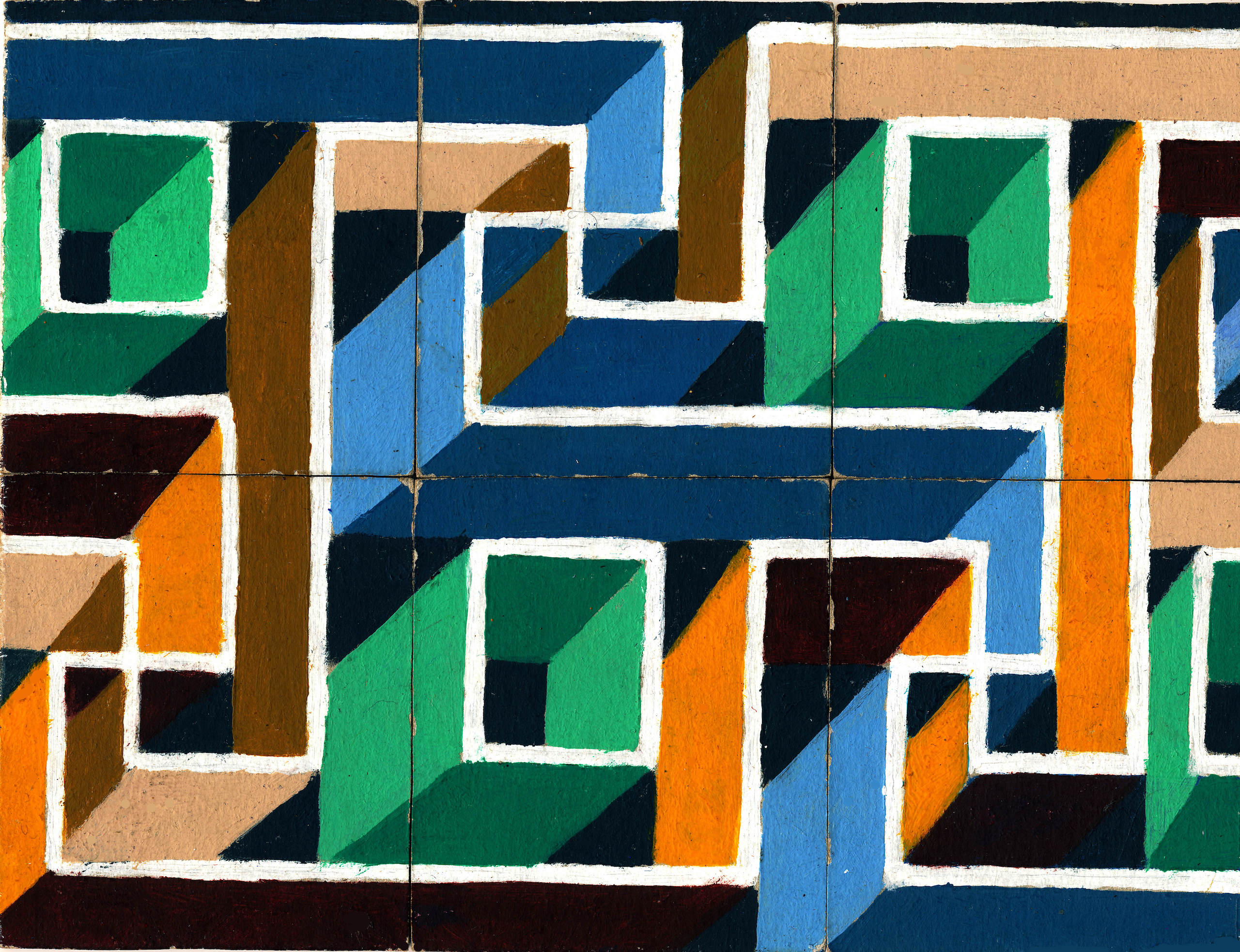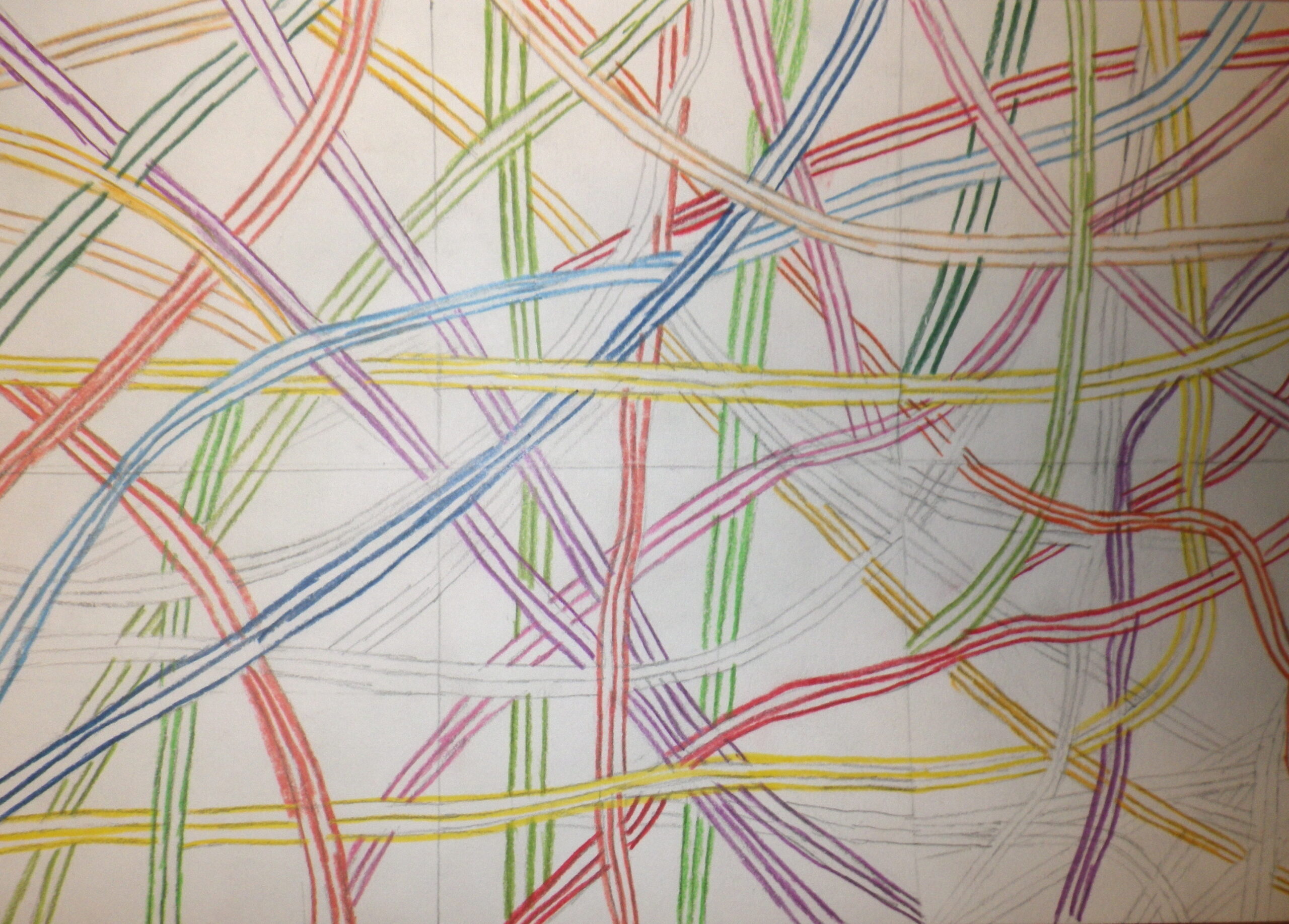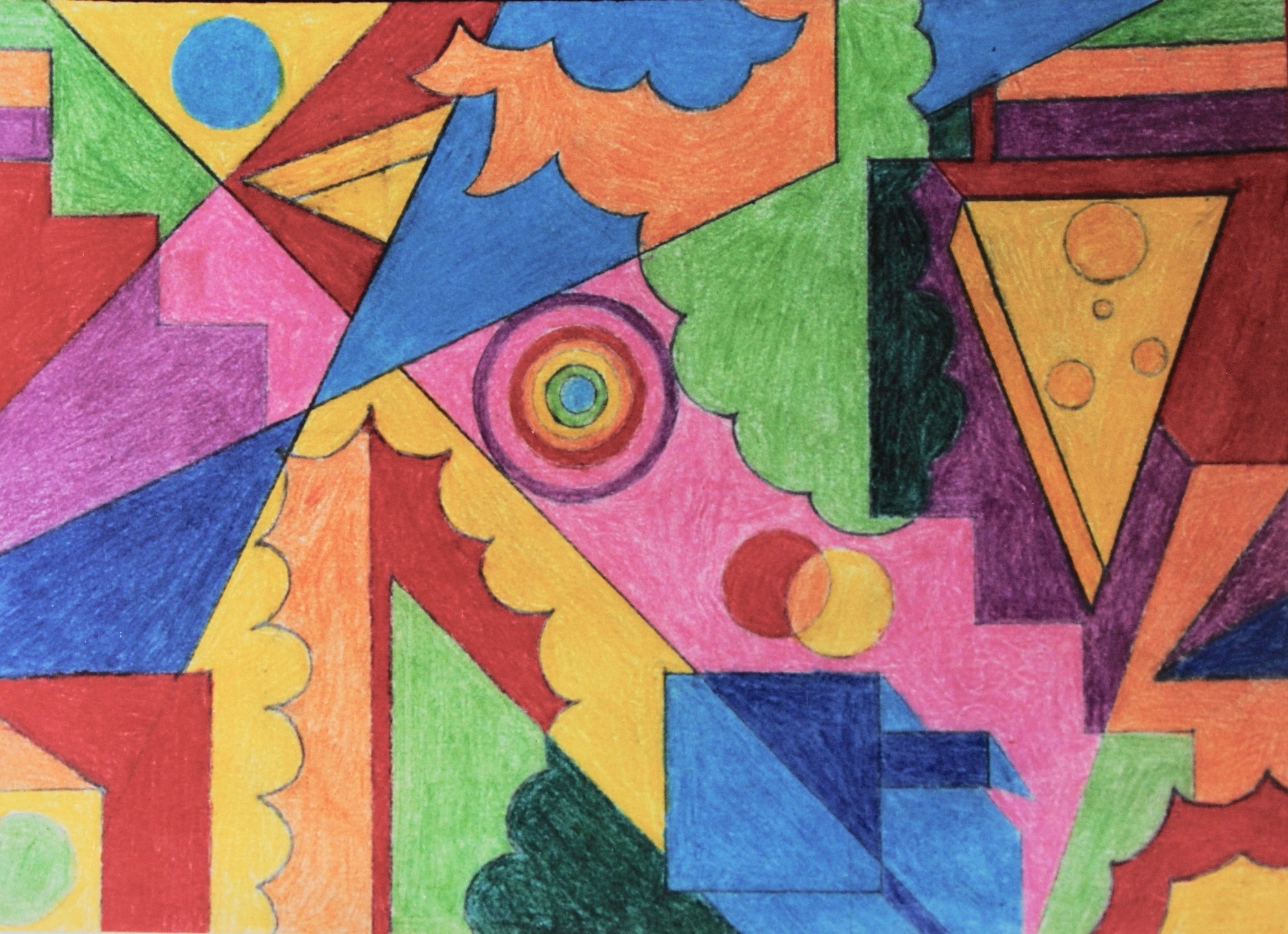CHAPTER 3 | DESIGNING A PUZZLE
This image is a detail from a long strip of colored ceramic pieces, a decoration somewhere in a church in Italy. Like the block pattern, this complex pattern gives the illusion of depth. I made a six-piece puzzle on thin cardboard. You can vaguely see the cutting lines of the six puzzle pieces. Because the design overlaps the cutting lines, it remains challenging to put the puzzle back together.

EXTRA: In response to this puzzle, I asked students aged 11-12 to design a puzzle. I gave them the following instructions:
Draw on thick sturdy paper or white cardboard a rectangular frame of 18 x 12 cm. Divide it with a pencil into six square puzzle pieces of 6 x 6 cm. Design your puzzle, possibly with depth effect. t really becomes a nice and tricky puzzle if your lines/shapes/colored areas overlap the cutting lines of the six squares. It does not have to be a pattern. Only after your design is finished, carefully cut or slice the puzzle pieces apart.
Here you see three clever and completely different elaborations with colored pencil by 11-12 year old (!) pupils:
In this first puzzle, long winding strips, each consisting of three colored lines, pass in front and behind each other, making them appear to float in space. You can still vaguely see the cutting lines of the six puzzle pieces.

In the second, beautifully colored puzzle you see objects with a clear side and all kinds of shapes overlapping each other.

In the third puzzle it’s a wonderful chaos of all kinds of 3D objects. Here also the the cutting lines of the puzzle are still vaguely visible.
